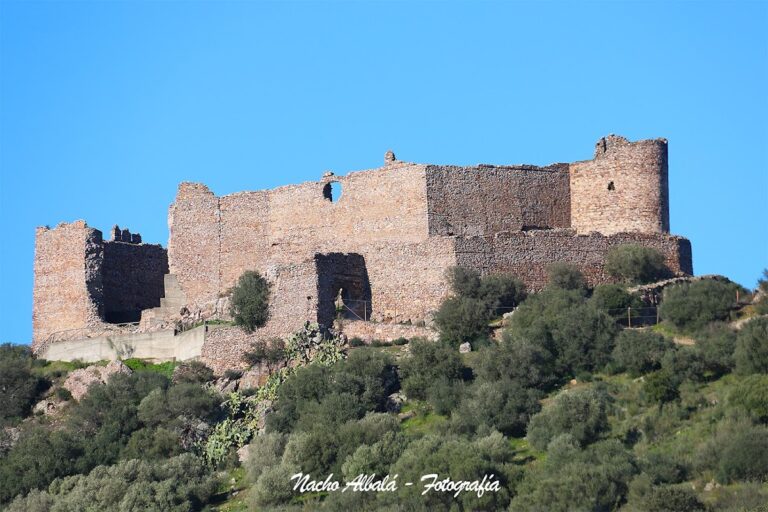Castle of Monfragüe: A Historic Fortress in Torrejón el Rubio, Spain
Visitor Information
Google Rating: 4.7
Popularity: Medium
Google Maps: View on Google Maps
Official Website: www.turismoextremadura.com
Country: Spain
Civilization: Unclassified
Remains: Military
History
The castle of Monfragüe is located in the municipality of Torrejón el Rubio, Spain. Its origins trace back to a strategic hilltop site that has been utilized by various civilizations over centuries for military defense.
The earliest known fortification at Monfragüe was established by the Celts. They initially built defenses there to protect their territory from Roman advances. With the Roman presence expanding in the region, the site’s vantage point over the Tagus River became valuable as a watchpoint, allowing early warning of approaching threats.
In 713, Arab forces conquered the area, renaming it Al-Mofrag, a term meaning “the abyss,” which likely referred to the dramatic cliffs and river gorge nearby. The castle itself was constructed by the Arabs in 811 on the remains of the earlier fortifications. During this period, the site served as a key defensive stronghold safeguarding their domain.
Between 1169 and 1180, the castle changed hands amidst the Christian Reconquista. The Portuguese knight Geraldo Sempavor captured it, marking an important stage in Christian efforts to reclaim territory. Later, King Alfonso VIII of Castile secured Monfragüe permanently for Christian rule.
Besides its military role, the castle also holds religious significance. In the 12th century, crusader knights from the Order of Monte Gaudio, founders of the Order of Monsfrag, brought a Byzantine statue of the Virgin Mary from Jerusalem. This sacred object is now housed in a hermitage adjacent to one of the castle’s towers, symbolizing a spiritual presence alongside the fortress’s martial past.
Over time, the castle’s control passed through Celts, Romans, Arabs, and Christians, each adapting the site to their defensive needs due to its commanding position overlooking the Tagus River and the surrounding landscape.
Remains
The ruins of the castle of Monfragüe outline a complex defensive structure that reflects its long history of occupation and adaptation. The layout includes remnants of the original defensive walls, designed to enclose and protect the hilltop stronghold. These walls have been partially consolidated to preserve their presence on the rugged terrain.
One notable feature is the barbican, a fortified outpost or gateway designed to protect the entrance to the castle. This defensive element would have provided additional security against attackers attempting to breach the walls.
Within the castle grounds lies an Arab cistern, known as an aljibe. This underground water storage system, built during the castle’s Islamic phase, was crucial for ensuring a reliable water supply during sieges. Its survival today offers insight into the vital infrastructure developed by the Arab occupants.
Two towers from the Christian period stand among the ruins, both of which have undergone restoration. The best-preserved tower is pentagonal in shape and dates from the 15th century, having been rebuilt to secure the castle’s defenses during later medieval times. This tower is open and accessible, providing a clear example of the castle’s evolving military architecture.
The second tower is cylindrical, also restored, and complements the overall defensive system established in the Christian era. Near one of these towers, a hermitage was constructed to house the Byzantine Virgin statue brought by the crusader knights. This religious structure sits close to the castle walls, reflecting a blending of spiritual and martial functions at the site.
Set atop a steep, rocky hill, the castle’s remains still command extensive views of the Tagus River valley. From this vantage point, one can overlook the surrounding natural park and the waters held by the nearby Alcántara dam, underscoring the strategic importance of the location throughout its history.










